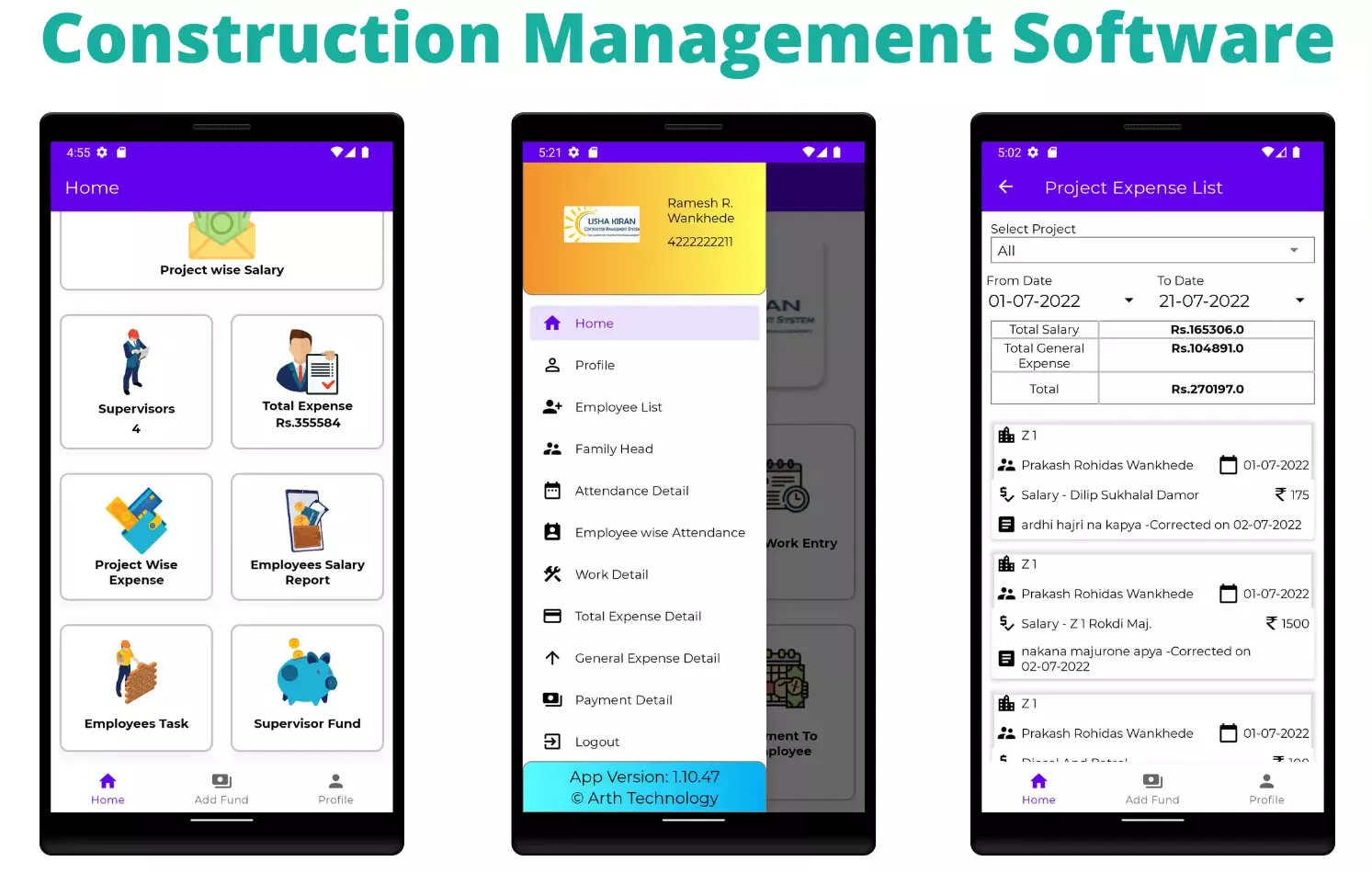Construction Software for Effective Project Planning and Execution
Construction Software for Effective Project Planning and Execution
Blog Article
Customized Building And Construction Monitoring Software Application: Optimizing Source Allowance and Budgeting Techniques
In the world of modern construction monitoring, the importance of tailored software program services can not be overemphasized. These innovative devices provide a nuanced technique to optimizing resource allocation and budgeting methods, vital components for effective project execution. By delving into the details of how such software can enhance resource allocation techniques and refine budget plan optimization techniques, a clear path towards heightened task efficiency emerges. In this electronic age where accuracy and effectiveness reign supreme, exploring the effect of customized building and construction administration software on these important facets reveals a realm of possibilities that could shape the future of the industry.
Advantages of Tailored Software Application Solutions
Customized software application remedies offer a myriad of benefits to construction monitoring firms looking for to boost effectiveness and streamline operations. By tailoring software application options to attend to job monitoring, scheduling, budgeting, and resource allowance, companies can optimize their process and achieve better performance.
Another advantage of tailored software application services is the capacity to supply real-time understandings and analytics. Building management firms can leverage data-driven decision-making to check project development, recognize bottlenecks, and make changes without delay. This aggressive strategy enhances job results and aids firms stay on track with timelines and budget plans.

Enhanced Source Allocation Approaches
Applying reliable resource allowance approaches is critical for building and construction management companies to maximize task end results and optimize performance. Enhanced source allocation methods entail strategically assigning employees, tools, and materials to particular tasks to ensure optimal use of resources. One vital aspect of enhanced source appropriation is the capacity to properly forecast task needs and allot resources as necessary. By leveraging construction management software application that uses real-time monitoring and reporting attributes, firms can dynamically adjust allocations as task needs develop, causing enhanced performance and cost-effectiveness.
Moreover, boosted source allowance methods allow construction firms to determine and attend to potential bottlenecks or source constraints proactively. By carrying out regular analyses of source utilization and efficiency metrics, supervisors can make data-driven choices to rearrange sources effectively and stop hold-ups. This aggressive technique not only enhances project timelines yet likewise minimizes the threat of spending plan overruns because of inefficient source allotment.
Budget Optimization Techniques
To accomplish optimum monetary efficiency in construction tasks, effective budget plan optimization strategies play an essential role in making sure price control and job success. One key method is the facility of a thorough job spending plan that assigns sources based upon top priority and crucial needs. By clearly defining the extent of work, establishing realistic expense estimates, and constantly monitoring expenditures, construction managers can recognize possible cost overruns early and take rehabilitative actions. Additionally, executing worth design techniques can assist streamline job prices without compromising quality. This includes examining each project component to recognize opportunities for cost savings while keeping efficiency criteria. Leveraging historic information and market standards enables building supervisors to make educated choices about budget appropriations and determine locations where spending can be enhanced. By incorporating these budget plan optimization methods right into construction monitoring software program, project stakeholders can enhance monetary preparation, resource allotment, and overall budget plan administration to drive task success and profitability.

Effect On Project Performance
Maximizing building and construction monitoring software program can dramatically boost project effectiveness by construction software streamlining communication, enhancing partnership, and assisting in data-driven decision-making. By systematizing task information, stakeholders can quickly access real-time updates, minimizing delays triggered by miscommunication or out-of-date information. Improved partnership attributes enable employee to collaborate seamlessly, regardless of their physical area, fostering a more natural and efficient workplace. Furthermore, construction monitoring software program can provide beneficial insights with information analytics, permitting job supervisors to make enlightened choices swiftly and accurately.
Furthermore, the automation of regular jobs such as scheduling, budget monitoring, and resource allocation can liberate valuable time for job groups to concentrate on vital tasks, inevitably speeding up job shipment. The capability to keep track of job development in real-time and recognize possible bottlenecks allows proactive analytical, protecting against problems from escalating and causing hold-ups. On the whole, the impact of customized building administration software on task performance is undeniable, providing an affordable advantage by optimizing workflows and making the most of productivity.
Future Trends in Construction Software Application
As the building and construction sector proceeds to develop, advancements in innovation are forming the future landscape of building and construction software application solutions. One significant trend imminent is the boosting combination of man-made knowledge (AI) and artificial intelligence abilities in building and construction software. These Learn More innovations have the potential to reinvent how building and construction tasks are taken care of by making it possible for anticipating analytics, automated decision-making procedures, and boosted job understandings.
An additional future trend in building and construction software is the expanding emphasis on cloud-based options. Cloud innovation provides enhanced versatility, scalability, and accessibility for construction teams, enabling real-time cooperation and data sharing throughout project stakeholders. This shift towards cloud-based software is expected to boost task performance, improve interaction, and improve total job outcomes.
In addition, the increase of Building Details Modeling (BIM) is anticipated to proceed shaping the building software program landscape. BIM software program promotes 3D modeling, visualization, and information administration, leading to improved task sychronisation, decreased mistakes, and enhanced project results. Embracing these future trends in building software will be critical for firms aiming to stay competitive and drive innovation in the industry.
Verdict
Finally, tailored building and construction administration software program here are the findings uses various advantages such as improved resource allotment techniques and budget optimization techniques. This software application has a considerable influence on job performance by simplifying procedures and enhancing general efficiency (australian construction software). As technology proceeds to advance, future fads in building software program are anticipated to additional optimize source allowance and budgeting techniques for building jobs
Report this page